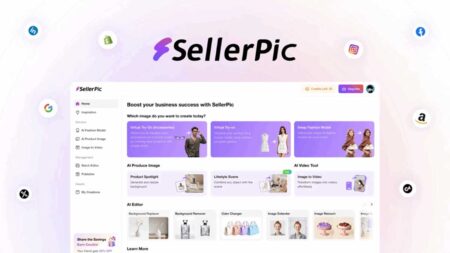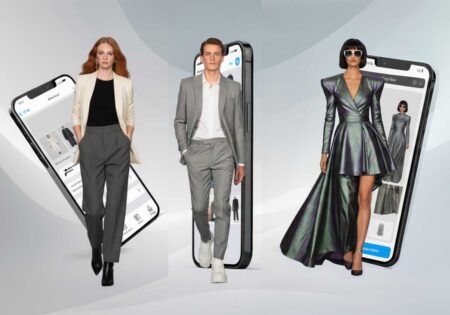Treat authenticity like a system, not a mood. Set the fence, skip the script, label the ad in plain words, then judge success by signals people do on purpose, saves, thoughtful comments, and remixes. Views matter. Trust lasts.
If you are asking how to handle brand authenticity in sponsored challenges, the short version is simple, set guardrails, protect creator voice, disclose in plain words, then measure trust, not just reach.
On this page
- What Counts as a Sponsored Challenge
- The Authenticity Framework, Four Moves
- Creator Brief, One Page You Can Steal
- Disclosure That Does Not Kill the Vibe
- TikTok Notes for Branded Mission and Hashtag Challenges
- Conflict Filter, Green, Yellow, Red
- Crisis Ready Without Being Paranoid
- Metrics That Actually Predict Trust
- Post Campaign Retro, Ten Questions
- Examples of Natural Disclosure Copy
- Frequently Asked Questions
I like sponsored challenges when they feel like a dare between friends. Coffee on the counter. Dog barking off camera. Early on, I tried scripting everything. The feed yawned. Now I set clear guardrails, let creators be human, and label the ad in simple language. Trust shows up. Views follow.
What Counts as a Sponsored Challenge
This section exists for one reason, to handle brand authenticity in sponsored challenges without losing trust. If a brand is involved and a creator gets money, product, or perks, you are advertising. That includes TikTok Branded Mission prompts, branded hashtag challenges, and UGC contests with prizes. Different wrappers, same reality. Be honest about the relationship and keep people safe while they play.
If you are new to brand-funded content partnerships, this quick primer shows how sponsored posts typically work from the creator side so you can brief with empathy.
The Authenticity Framework, Four Moves
Guardrails, Not Scripts
Put the rules in one page. Safety, claims we can stand behind, off limits contexts, and how takedowns work if needed. Then write the freedoms, hook, angle, sound choices, cut style. Real creators do not need a teleprompter. They need a fence and a field.
Creator Voice Wins Trust
Ask for lived detail. First tries. Tiny fails. A before and after that is not perfect. If a prompt only lands for trained dancers or studio lighting, it is the wrong prompt. Invite the messy win. That is where strangers decide you are real.
Context and Disclosure, Upfront
Say it like a human. Use a spoken line or on screen text, Paid partnership with X, then repeat Ad in the first words of the caption. Use the platform toggle too, but do not stop there. If someone has to click more to learn it is an ad, the label came too late. On Reels and Shorts, same approach, say it in the video, then lead your caption with Ad.
Measure Trust, Not Just Reach
What actually moves trust is simple.
Chase signals people choose. Saves. Thoughtful comments. Stitches or remixes from creators you did not pay. Watch time on disclosed posts. Creators who come back for round two. Impressions are weather. Useful, not a steering wheel.
Creator Brief, One Page You Can Steal
Here is the version I actually send. Short. Clear. Fast to act on.
- Purpose, what you want the viewer to do by the end
- Story beats, start, turn, end, told your way
- What to show, product moments and claims we can stand behind
- What to skip, sensitive contexts and no go claims
- Disclosure, say Paid partnership with X in the video and add Ad in the caption
- Specs and support, format, length, music rules, deadline, who to ping
Why it works, creators can move fast without asking for permission every five minutes, and you have receipts if a question comes up later.
Disclosure That Does Not Kill the Vibe
Keep it short and obvious. Speak it or place it on screen at the start. Repeat it in the caption. Platform toggles are helpful, not enough. Use the same two step disclosure you saw above. Better to be plain and proud about the partnership.
TikTok Notes for Branded Mission and Hashtag Challenges
- Branded Mission, use it when you want range. Set tight eligibility and simple creative asks. Pick winners that feel like real life, then turn them into ads.
- Branded hashtags, write prompts that are easy to copy and hard to fake. Think household hacks, quick before and afters, or tiny rituals people already do.
- Disclosure pairing, use the same two step disclosure from above.
Conflict Filter, Green, Yellow, Red
This is my five minute scan before launch.
- Green, values match, creator already talks about the category, no safety clashes
- Yellow, mild tone tension or recent competitor work, tighten claims and proceed with eyes open
- Red, pairing looks opportunistic or unsafe, or the trend invites risky behavior
Simple gut check, could the creator defend the post to their favorite subscriber without flinching. If not, rethink the pairing or the prompt.
Crisis Ready Without Being Paranoid
Most fixes are boring and quick. A caption tweak. A clearer label. Say thanks and keep rolling.
If something crosses a safety or claims line, pull it fast, explain why, and write down the lesson for next time. No drama. Just reps and records.
Metrics That Actually Predict Trust
When the dust settles, focus on signals that last. Use this five step refresher on audience engagement to shape prompts that invite real comments, saves, and remixes instead of empty likes.
- Saves per thousand views
- Thoughtful comments from people who were not in the challenge
- Stitches or remixes by unpaid creators
- Creator retention to a second collab
- Disclosure compliance rate across the campaign
- Time to first organic spin that is not a copy paste of your sample
Post Campaign Retro, Ten Questions
When the dust settles, I ask ten questions.
- Which prompt words showed up without being forced
- Which off limits items kept sneaking in, and why
- Where did disclosure land in frame, and did people still watch
- What formats sparked stitches or remixes fastest
- Which angles pulled sincere comments instead of fire emojis
- What got saved the most, and why
- What pushed negative sentiment, and how would we fix it
- Which rules clogged approvals, and can we simplify them
- What do we keep in the brief next time
- What do we retire with gratitude
Examples of Natural Disclosure Copy
- On screen, Paid partnership with River & Rye, details below
- Spoken, This video is part of a paid partnership with River & Rye
- Caption first words, Ad, testing the River & Rye drill kit, here is how it handled my crooked shelves
Rule of thumb, if a distracted viewer cannot miss it, you did it right.
Frequently Asked Questions
How do I keep a sponsored challenge authentic if we have strict claims rules?
Keep the claims tight and the story loose. Set guardrails, then let creators choose the angle and the language. You get safer posts that also feel alive.
What disclosure do I need on short form video?
Say it in the video and lead the caption with Ad. Use the platform toggle as a helper, not the only label.
What if the platform has a paid partnership toggle?
Great, use it. Then add your own plain words so the label is visible even if the toggle fails or a viewer does not notice it.
Do UK challenges follow different rules?
The spirit is the same. Ads should be obviously identifiable without prior knowledge or extra taps. Clear labels beat clever ones.
How do I measure trust, not just reach?
Watch saves, thoughtful comments, stitches or remixes, creator retention, and disclosure compliance. Those signals predict long term lift.
More on Blufashion
- Blufashion Ethics Policy, How We Keep Content Honest & Transparent
- 6 Social Media Marketing Tips for Your Fashion Brand






